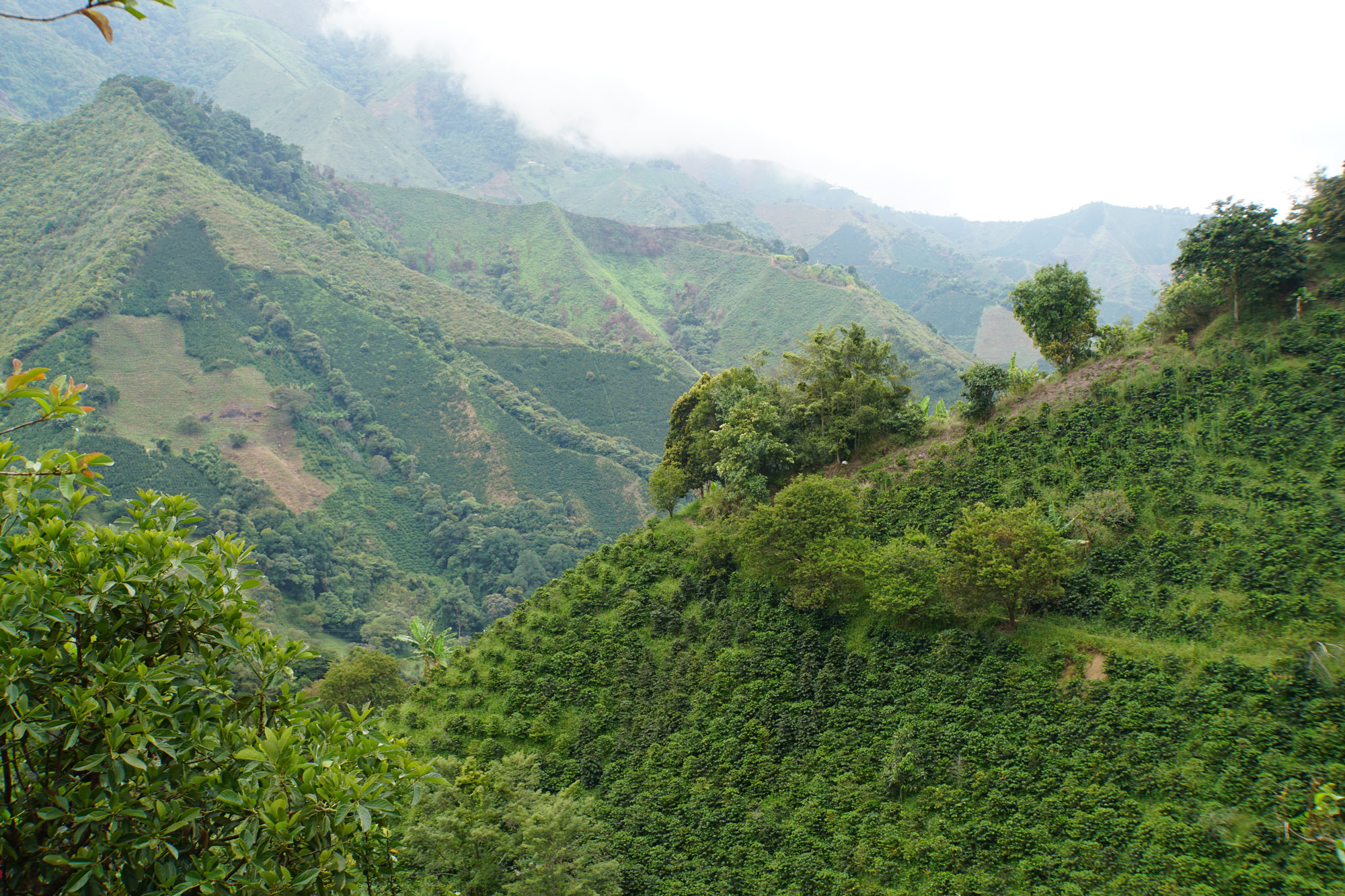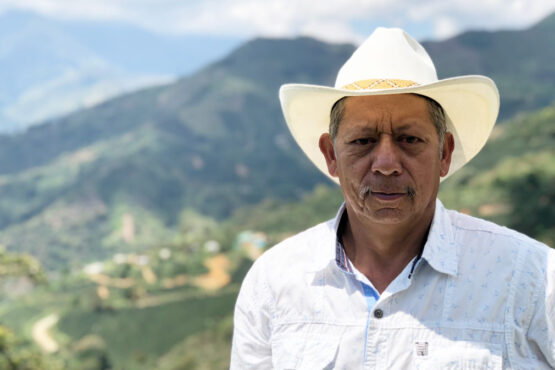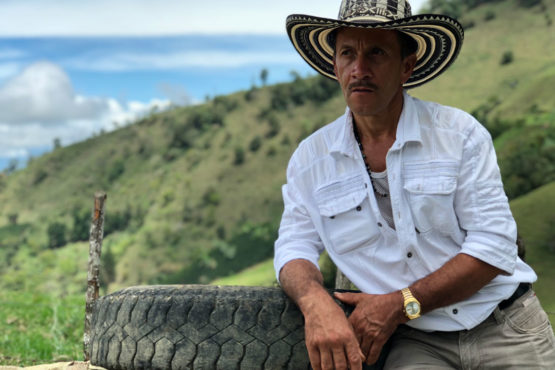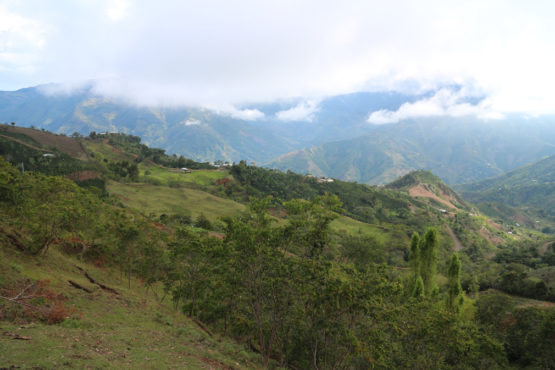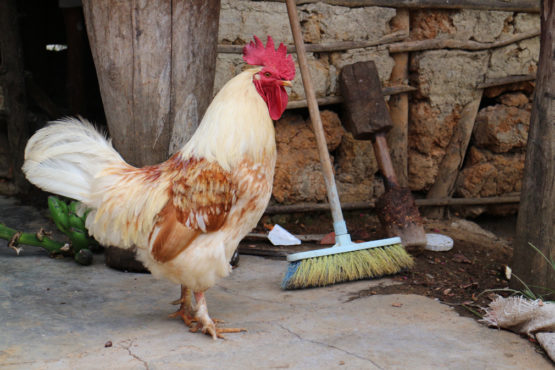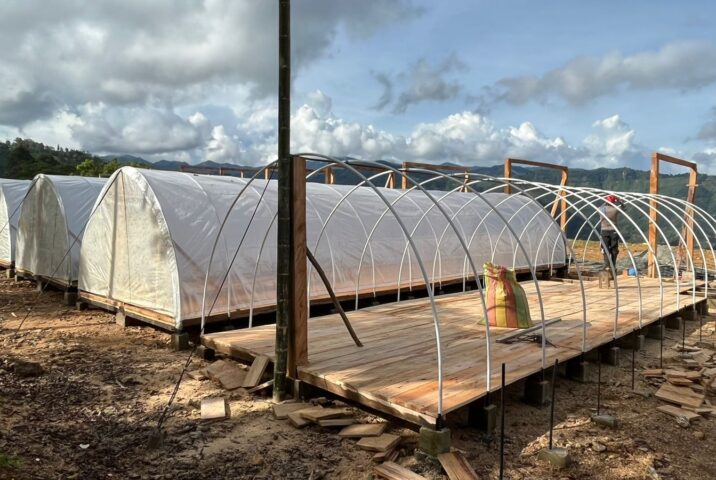Small Producers of El Hato
Bright and lifted, with stone fruit acidity and a juicy body. Yellow peach, green grape and hazelnut, balanced by panela sweetness.
This coffee was grown and processed by six smallholder producers that are situated around the village of El Hato, a small community located in the municipality of Caicedo, in the state of Antioquia, Colombia.
The farms that contributed to this lot are very small – on average just 1.5 hectares in size – and are located at an incredible 2,000-2,200m above sea level. El Hato is one of the highest sub-municipalities of Caicedo, and therefore in Colombia. The coffee is grown on the side of a deep canyon, which drops down to the mighty Cauca River, some 500m above sea level. The steep canyon walls trap warm currents, which circulate to higher ground and make it possible for coffee to be grown at such staggeringly high elevations. The unique geological attributes of the region contribute to the outstanding cup profile of coffees farmed and processed in the area.
Smallholder farmers in this area were pioneers in planting and producing coffee at these high elevations. They were initially told by Colombia’s national coffee grower’s federation (Federacion Nacional de Cafeteros de Colombia or FNC) that it would be impossible to grow coffee in such a cool climate. However, many farmers bought land here out of necessity as it was much more affordable than at lower elevations, which were considered more prosperous for coffee production. Their hard work has since paid off, with the area becoming recognised for the exceptional cup quality and characteristics. The cool climate is ideal for the slow ripening of coffee cherries, leading to denser beans and a sweeter, more complex cup profile. Coffees from El Hato now attract high premiums from specialty buyers, who are able to access the region through the work of exporters like our supply partners, Pergamino.
ABOUT ANTIOQUIA
Antioquia is located in central northwestern Colombia. Coffee was introduced to the region in the latter part of the 19thcentury. Since then, this mountainous, fertile department has 128,000 hectares of coffee that is produced by a mix of large estates and tiny farms.
Antioquia only recently became more accessible to specialty coffee buyers – largely thanks to a transformation of the department led by Sergio Fajardo, who was the governor of the department between 2012-2016. Sergio transformed Antioquia’s capital city, Medellín, from a violent and dangerous place to a world-class tourist destination with a strong economy. Coffee has played a significant role in this this transformation and, as access to many producers has improved, the region has become one of Colombia’s most important and celebrated coffee-producing areas.
Our export partners for this coffee, Pergamino, have worked hard commercialise specialty-grade coffee throughout Antioquia, and are now able to source some stunning coffees from very dedicated producers. They work closely with the producers to give them feedback on their coffees (provided by Pergamino’s expert team of cuppers) and provide top up payments when the coffee is sold at a higher premium.
Head here to learn more about the work of Pergamino.
HOW THIS COFFEE WAS PROCESSED
The coffees in this lot were selectively hand-harvested, with most labour being provided by the farmers and their families. They were processed using the washed method at each farm’s ‘micro-beneficio’ (mill).
The coffee was pulped using a small manual or electric pulper, and then placed into a fermentation tank, where it was fermented for around 48 hours (depending on the weather and the farms’ location) and then washed using cold, clean water from surrounding streams.
It was then carefully dried (over 10–18 days) on parabolic beds, which are constructed a bit like a ‘hoop house’ greenhouse, and act to protect the coffee from the rain and prevent condensation dripping back onto the drying beans. The greenhouse is constructed out of plastic sheets and have adjustable walls to help with airflow, and temperature control to ensure the coffee can dry slowly and evenly.
Once dry, the coffee was delivered to Pergamino’s warehouse, where it was cupped and graded, and then rested in parchment until it was ready for export.
